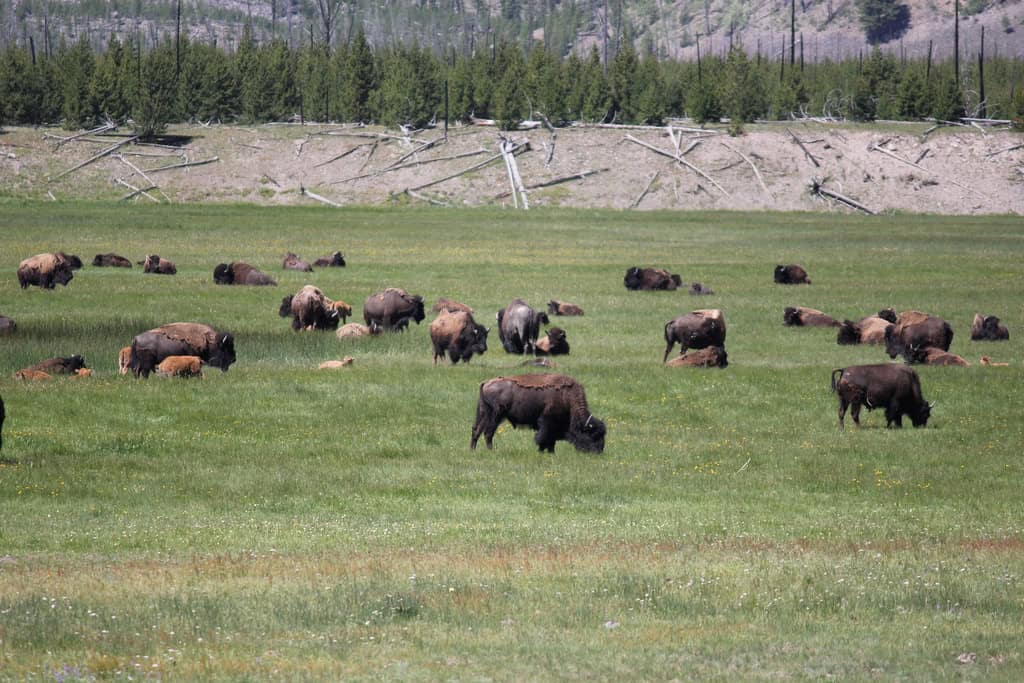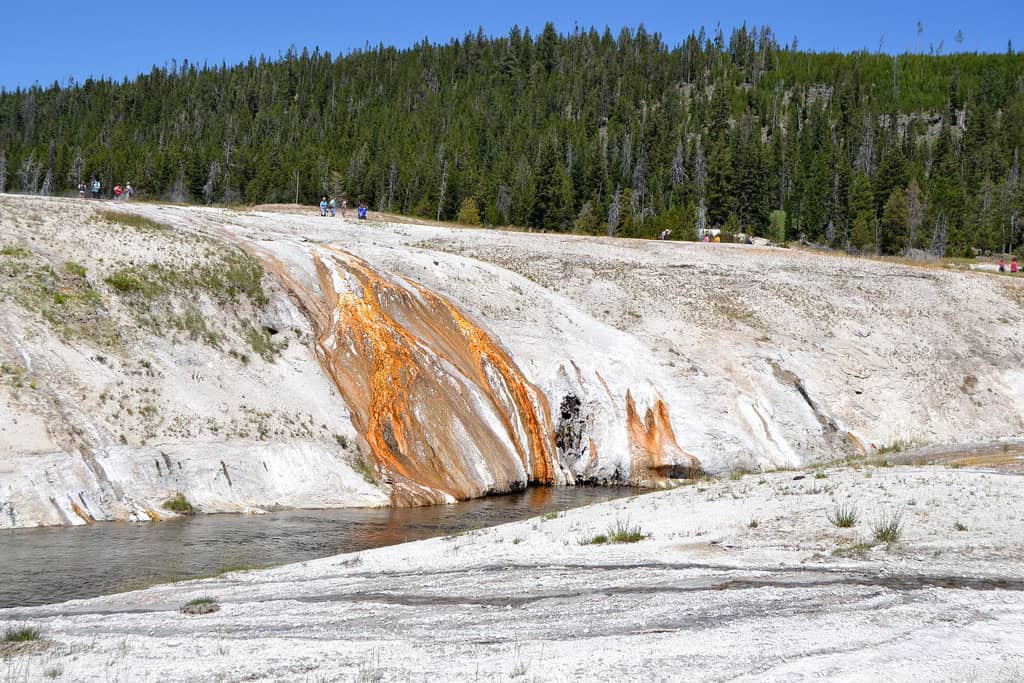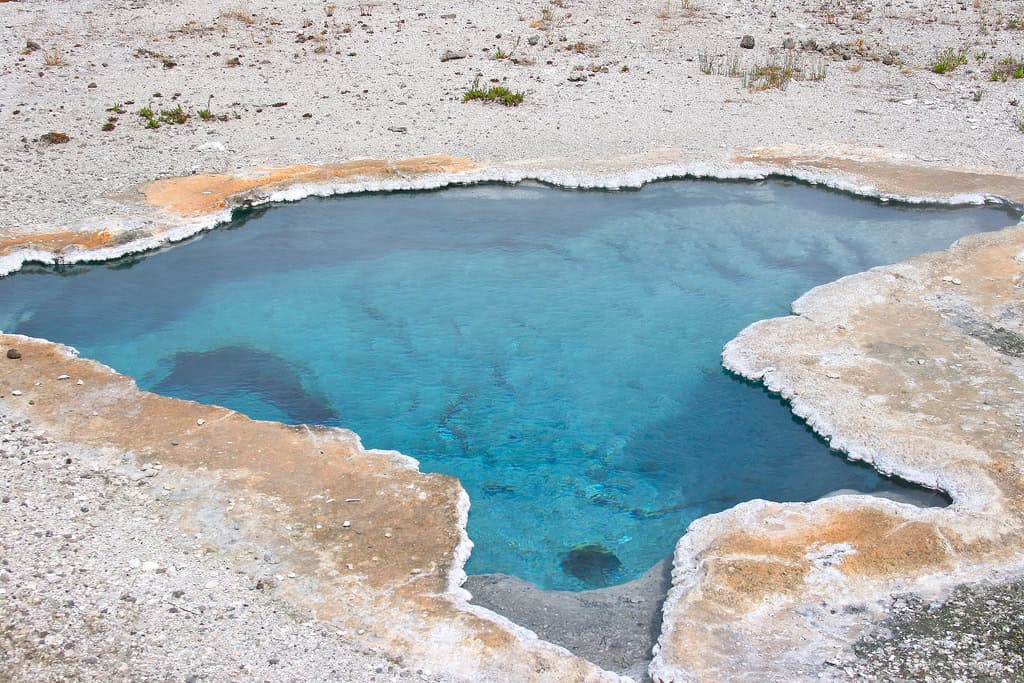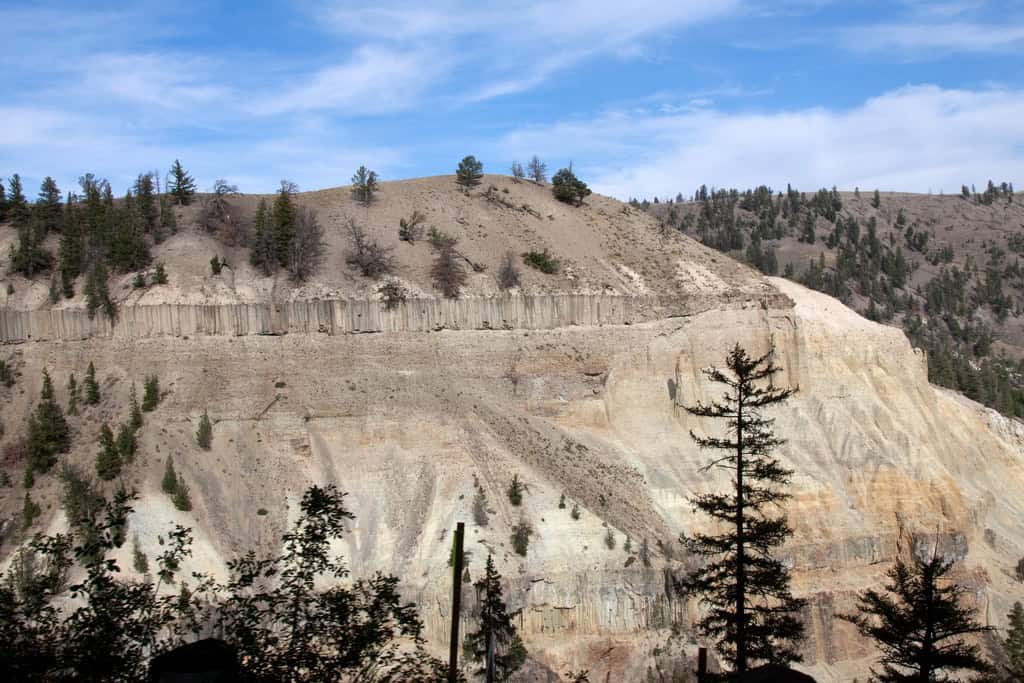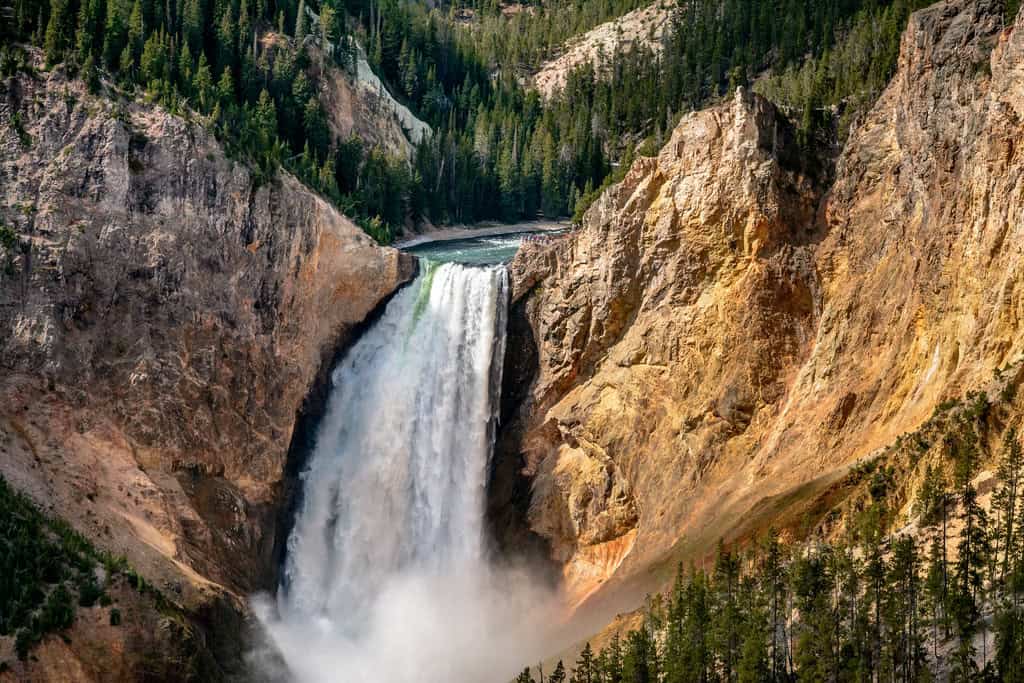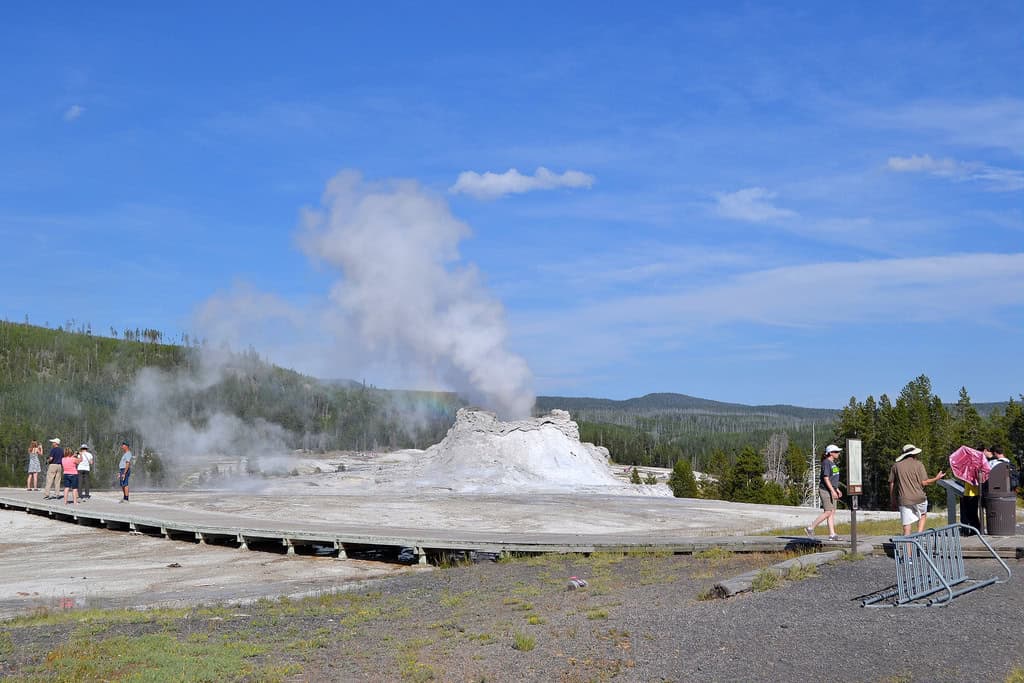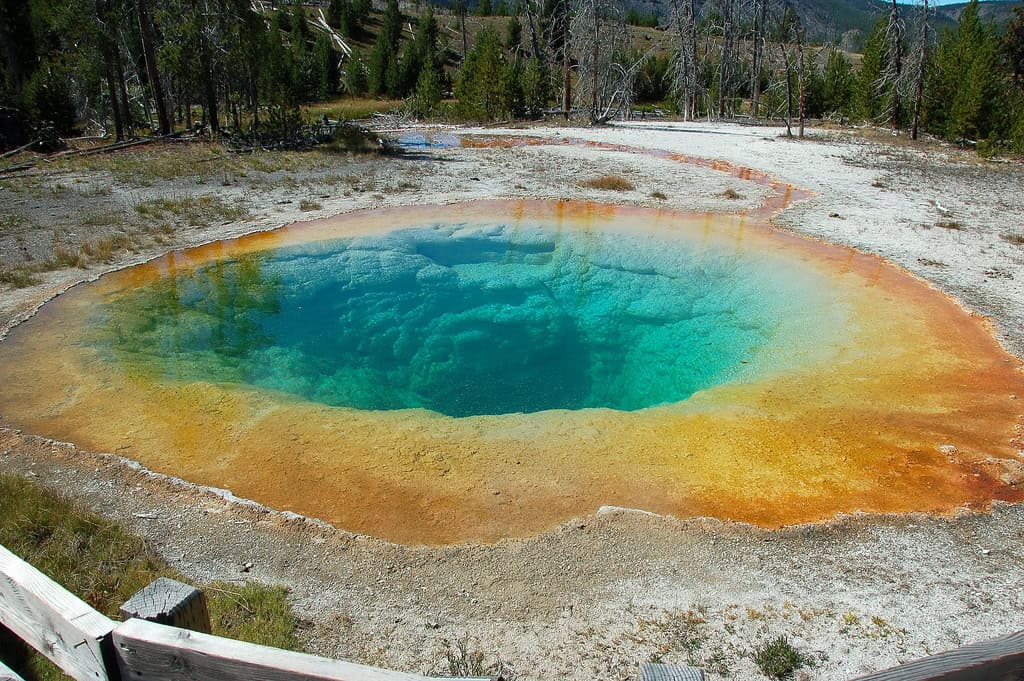
Yellowstone National Park, the first national park in the world, was established by the U.S. Congress and signed into law by President Ulysses S. Grant on March 1, 1872. Located primarily in the U.S. state of Wyoming, although it also extends into Montana and Idaho, Yellowstone spans an area of 2,219,791 acres (8,983 square kilometers). This iconic park is renowned for its rich biodiversity, geothermal features, stunning landscapes, and extensive history of human interaction.
Geology and Geothermal Features
Yellowstone is most famous for its geothermal features, particularly its geysers, hot springs, mudpots, and fumaroles. The park sits atop the Yellowstone Caldera, a supervolcano that last erupted approximately 640,000 years ago. This caldera is one of the largest active volcanic systems in the world.
Geysers and Hot Springs
One of the park’s most famous geysers is Old Faithful, known for its regular and predictable eruptions, which can reach heights of 106 to 184 feet and typically occur every 90 minutes. However, Old Faithful is just one of over 500 geysers in the park. The park is also home to the largest geyser in the world, Steamboat Geyser, which can erupt to heights of 300 feet.
Hot springs are another prominent geothermal feature. The most famous of these is the Grand Prismatic Spring, the largest hot spring in the United States and the third largest in the world. Its vivid colors, ranging from deep blue in the center to bright red at the edges, are caused by microbial mats around the edges of the mineral-rich water.
Mudpots and Fumaroles
Mudpots are acidic hot springs with limited water, resulting in a bubbling mixture of mud and volcanic gases. The most famous mudpot in Yellowstone is the Fountain Paint Pot, known for its thick, bubbling mud.
Fumaroles, or steam vents, are another geothermal feature. These occur when the water beneath the surface is superheated and emerges as steam. Roaring Mountain is a notable fumarole site, known for the loud sounds created by escaping steam.
Flora and Fauna
Yellowstone is a critical habitat for a diverse array of wildlife, including some of North America’s most iconic species. The park’s ecosystems range from alpine meadows to forests, providing varied habitats that support different plant and animal communities.
Mammals
Yellowstone is home to a variety of large mammals. Bison, which were nearly driven to extinction in the 19th century, roam freely in large herds. Elk, deer, and moose are also common, as are predators like grizzly bears, black bears, wolves, and coyotes. The reintroduction of wolves in 1995, after a 70-year absence, has been a significant ecological event, contributing to changes in prey populations and behaviors, and affecting the broader ecosystem.
Birds
The park hosts over 300 bird species, making it a prime location for birdwatching. Notable species include the bald eagle, osprey, peregrine falcon, and trumpeter swan. The varied habitats within the park, from wetlands to forests, support a wide diversity of avian life.
Fish and Amphibians
Yellowstone’s rivers and lakes are home to several fish species, including the native cutthroat trout. The park also has populations of amphibians such as the boreal chorus frog and the western tiger salamander.
Human History
The human history of Yellowstone dates back more than 11,000 years, with evidence of Native American presence in the region long before European explorers arrived.
Native American History
Numerous Native American tribes have historical ties to the Yellowstone region, including the Shoshone, Crow, Blackfeet, Flathead, and Nez Perce. These tribes used the land for hunting, fishing, and gathering, and they held spiritual connections to the geothermal features.
European Exploration and Settlement
European exploration of the region began in the early 19th century. Notable explorers include John Colter, a member of the Lewis and Clark Expedition, who provided the first detailed account of the Yellowstone area in the early 1800s. In the mid-19th century, organized expeditions such as the Cook-Folsom-Peterson Expedition of 1869 and the Washburn-Langford-Doane Expedition of 1870 further documented the region’s wonders.
Establishment of the Park
The growing public awareness of Yellowstone’s unique features led to the establishment of the park in 1872. Early management of the park faced numerous challenges, including poaching, vandalism, and limited infrastructure. The U.S. Army managed the park from 1886 to 1918, playing a crucial role in its preservation and protection.
National Park Service
The National Park Service (NPS) was established in 1916, and in 1918, it assumed responsibility for managing Yellowstone. Since then, the NPS has focused on balancing conservation with public access, implementing policies to protect the park’s natural and cultural resources while accommodating millions of visitors annually.
Conservation and Management
Conservation has been a central theme in Yellowstone’s history, with numerous efforts aimed at preserving its natural beauty and ecological integrity.
Wildlife Conservation
Efforts to conserve wildlife populations have been critical to the park’s management. The reintroduction of wolves is one of the most well-known conservation successes. This project has had far-reaching ecological impacts, demonstrating the importance of top predators in maintaining healthy ecosystems.
Fire Management
Fire management is another crucial aspect of Yellowstone’s conservation strategy. The 1988 fires, which burned approximately 36% of the park, highlighted the role of fire in maintaining ecological balance. Since then, the NPS has adopted a more nuanced approach to fire management, recognizing the ecological benefits of natural fire regimes while ensuring the safety of visitors and infrastructure.
Geothermal Feature Protection
Protecting the park’s geothermal features is a significant challenge. Human activity, including the development of infrastructure and improper disposal of waste, can impact these fragile environments. The NPS has implemented measures to limit human impact, including boardwalks and designated viewing areas to minimize direct contact with geothermal features.
Recreation and Tourism
Yellowstone is one of the most popular national parks in the United States, attracting millions of visitors each year. The park offers a wide range of recreational activities, from hiking and camping to wildlife viewing and photography.
Hiking and Camping
Yellowstone boasts over 900 miles of hiking trails, offering options for all skill levels. Popular hikes include the Grand Canyon of the Yellowstone, Mount Washburn, and the Lamar Valley. Backcountry camping provides opportunities for solitude and exploration, with over 300 designated backcountry campsites.
Wildlife Viewing
Wildlife viewing is one of the park’s main attractions. The Lamar Valley, often referred to as “America’s Serengeti,” is particularly renowned for its abundant wildlife, including bison, elk, and wolves. The Hayden Valley is another prime wildlife viewing area, offering opportunities to see grizzly bears, bison, and a variety of bird species.
Geothermal Features and Scenic Drives
Visitors can explore the park’s geothermal features via boardwalks and trails, with the Upper Geyser Basin, Midway Geyser Basin, and Norris Geyser Basin being popular destinations. Scenic drives, such as the Grand Loop Road, provide access to many of the park’s most famous sights, including Old Faithful, Yellowstone Lake, and the Grand Canyon of the Yellowstone.
Winter Activities
Winter transforms Yellowstone into a wonderland of snowy landscapes and unique recreational opportunities. Snowmobiling, snowshoeing, and cross-country skiing are popular winter activities. The park’s geysers and hot springs take on a magical quality in the winter, with steam rising against a backdrop of snow and ice.
Scientific Research
Yellowstone has long been a site for scientific research, providing valuable insights into geology, ecology, and conservation.
Geological Research
The park’s geothermal features and volcanic activity make it a natural laboratory for geological research. Scientists study the Yellowstone Caldera and the processes that drive geothermal activity, contributing to our understanding of volcanic systems and geothermal energy.
Ecological Research
Yellowstone’s diverse ecosystems and wildlife populations provide opportunities for ecological research. Studies on predator-prey dynamics, particularly involving wolves and elk, have advanced our understanding of trophic cascades and ecosystem management. The park’s diverse flora and fauna also offer insights into species adaptation and resilience.
Climate Change Research
Yellowstone is an important site for studying the impacts of climate change on natural systems. Researchers monitor changes in temperature, precipitation, and ecosystem dynamics, providing critical data for understanding and mitigating the effects of climate change on protected areas.
Challenges and Future Directions
Yellowstone faces numerous challenges as it enters its second century as a national park. Balancing conservation with increasing visitation, managing the impacts of climate change, and preserving the park’s natural and cultural resources require ongoing efforts and innovative solutions.
Visitor Management
With over 4 million visitors annually, managing the impact of tourism is a significant challenge. The NPS has implemented measures such as shuttle systems, timed entry, and visitor education programs to reduce congestion and minimize environmental impact. Continued efforts to promote sustainable tourism practices are essential to preserving the park’s integrity.
Climate Change
Climate change poses a significant threat to Yellowstone’s ecosystems. Rising temperatures, altered precipitation patterns, and changing wildfire regimes can impact wildlife, vegetation, and geothermal features. Ongoing research and adaptive management strategies are critical to addressing these challenges and ensuring the park’s resilience.
Cultural Resource Preservation
Yellowstone’s cultural resources, including archaeological sites, historic structures, and Native American heritage, require careful preservation. Collaboration with Native American tribes, historical societies, and researchers is essential to protecting these resources and honoring the park’s rich cultural history.
Yellowstone National Park is a symbol of natural beauty, ecological diversity, and the enduring importance of conservation. From its stunning geothermal features to its rich wildlife and diverse ecosystems, Yellowstone offers unparalleled opportunities for exploration, recreation, and scientific discovery. As the park faces the challenges of the future, ongoing efforts to balance preservation and public access will be crucial to maintaining its status as one of the world’s most treasured natural landscapes.
